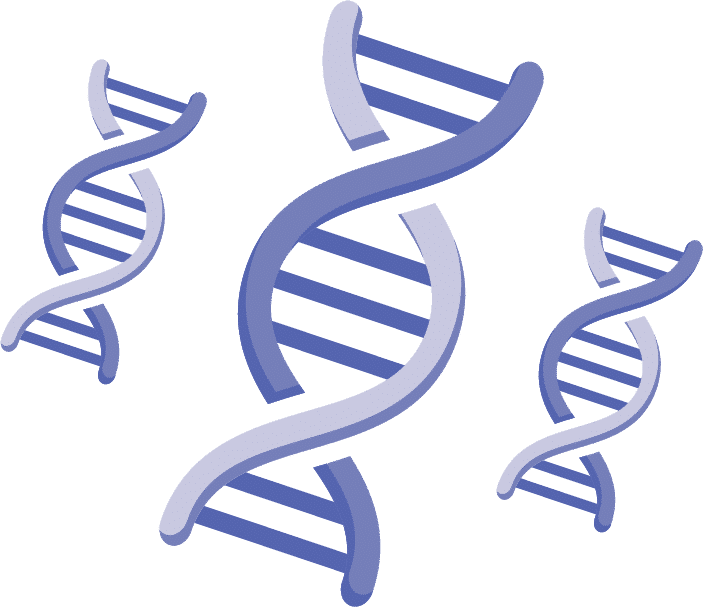Stem cells are unlocking life-saving treatments today and hold endless possibilities for the future.
More than 80 diseases treatable with cord blood stem cells.
Take a step towards a guarded and protected life. Get ready to live a backed up future with peace of mind.
An Incredible Healing Potential that Ensures our Well-being

Today, there are many diseases that can be treated with umbilical cord blood stem cells. As research advances, the list will continue to grow and many more treatments and cures will be developed from this source as well as from dental pulp and adipose tissue. Below is a list of treatable disease with each type of stem cell source:
Get a closer look at the potential of stem
cells and the diseases they can treat
- Adrenoleukodystrophy
- Gaucher’s disease (infantile)
- Metachromatic leukodystrophy
- Krabbe disease (globoid cell leukodystrophy)
- Gunther disease
- Hermansky-Pudlak syndrome
- Hurler syndrome
- Hurler-Scheie syndrome
- Hunter syndrome
- Sanfilippo syndrome
- Maroteaux-Lamy syndrome
- Mucolipidosis Type II, III
- Alpha mannosidosis
- Niemann Pick Syndrome, type A and B
- Sandhoff Syndrome
- Tay-Sachs Disease
- Batten disease (inherited neuronal ceroid lipofuscinosis)
- Lesch-Nyhan disease
- Ataxia telangiectasia
- Chronic granulomatous disease
- DiGeorge syndrome
- IKK gamma deficiency
- Immune dysregulation polyendocrineopathy X-linked
- Mucolipidosis, Type II
- Myelokathexis
- X-linked immunodeficiency
- Severe combined immunodeficiency
- Adenosine deaminase deficiency
- Wiskott-Aldrich syndrome
- X-linked agammaglobulinemia
- X-linked lymphoproliferative disease
- Omenn’s syndrome
- Reticular dysplasia
- Thymic dysplasia
- Leukocyte adhesion deficiency
Failure Syndromes
- Amegakaryocytic thrombocytopenia
- Autoimmune neutropenia (severe)
- Congenital dyserythropoietic anemia
- Cyclic neutropenia
- Diamond-Blackfan anemia
- Evan’s syndrome
- Fanconi anemia
- Glanzmann’s disease
- Juvenile dermatomyositis
- Kostmann’s syndrome
- Red cell aplasia
- Schwachman syndrome
- Severe aplastic anemia
- Congenital sideroblastic anemia
- Thrombocytopenia with absent radius (TAR syndrome)
- Dyskeratosis congenita
- Acute lymphoblastic leukemia (ALL)
- Acute myeloid leukemia (AML)
- Burkitt’s lymphoma
- Chronic myeloid leukemia (CML)
- Juvenile myelomonocytic leukemia (JMML)
- Hemophagocytic lymphohistiocytosis
- Non-Hodgkin’s lymphoma
- Hodgkin’s lymphoma
- Langerhans cell histiocytosis
- Lymphomatoid granulomatosis
- Myelodysplastic syndrome (MDS)
- Chronic myelomonocytic leukemia (CMML)
- Sickle-cell anemia (hemoglobin SS)
- HbSC disease
- Sickle βo Thalassemia
- α-thalassemia major (hydrops fetalis)
- β-thalassemia major (Cooley’s anemia)
- β-thalassemia intermedia
- E-βo thalassemia
- E-β+ thalassemia
Clinical Trials
- Cerebral Palsy
- Neonatal Brain Injury
- Type I Diabetes
- Langerhans Cells Hystocitosys
- Evan Syndrome
- Family Hemofagocytic Lymphohistocitosys
- Hemofagocytic Lymphohistocitosys Linked to the Epstein Barr Virus
- Adrenoleukodystrophy
- Gaucher’s disease (infantile)
- Metachromatic leukodystrophy
- Krabbe disease (globoid cell leukodystrophy)
- Gunther disease
- Hermansky-Pudlak syndrome
- Hurler syndrome
- Hurler-Scheie syndrome
- Hunter syndrome
- Sanfilippo syndrome
- Maroteaux-Lamy syndrome
- Mucolipidosis Type II, III
- Alpha mannosidosis
- Niemann Pick Syndrome, type A and B
- Sandhoff Syndrome
- Tay-Sachs Disease
- Batten disease (inherited neuronal ceroid lipofuscinosis)
- Lesch-Nyhan disease
- Ataxia telangiectasia
- Chronic granulomatous disease
- DiGeorge syndrome
- IKK gamma deficiency
- Immune dysregulation polyendocrineopathy X-linked
- Mucolipidosis, Type II
- Myelokathexis
- X-linked immunodeficiency
- Severe combined immunodeficiency
- Adenosine deaminase deficiency
- Wiskott-Aldrich syndrome
- X-linked agammaglobulinemia
- X-linked lymphoproliferative disease
- Omenn’s syndrome
- Reticular dysplasia
- Thymic dysplasia
- Leukocyte adhesion deficiency
Failure Syndromes
- Amegakaryocytic thrombocytopenia
- Autoimmune neutropenia (severe)
- Congenital dyserythropoietic anemia
- Cyclic neutropenia
- Diamond-Blackfan anemia
- Evan’s syndrome
- Fanconi anemia
- Glanzmann’s disease
- Juvenile dermatomyositis
- Kostmann’s syndrome
- Red cell aplasia
- Schwachman syndrome
- Severe aplastic anemia
- Congenital sideroblastic anemia
- Thrombocytopenia with absent radius (TAR syndrome)
- Dyskeratosis congenita
- Acute lymphoblastic leukemia (ALL)
- Acute myeloid leukemia (AML)
- Burkitt’s lymphoma
- Chronic myeloid leukemia (CML)
- Juvenile myelomonocytic leukemia (JMML)
- Hemophagocytic lymphohistiocytosis
- Non-Hodgkin’s lymphoma
- Hodgkin’s lymphoma
- Langerhans cell histiocytosis
- Lymphomatoid granulomatosis
- Myelodysplastic syndrome (MDS)
- Chronic myelomonocytic leukemia (CMML
- Sickle-cell anemia (hemoglobin SS)
- HbSC disease
- Sickle βo Thalassemia
- α-thalassemia major (hydrops fetalis)
- β-thalassemia major (Cooley’s anemia)
- β-thalassemia intermedia
- E-βo thalassemia
- E-β+ thalassemia
Clinical Trials
- Cerebral Palsy
- Neonatal Brain Injury
- Type I Diabetes
- Langerhans Cells Hystocitosys
- Evan Syndrome
- Family Hemofagocytic Lymphohistocitosys
- Hemofagocytic Lymphohistocitosys Linked to the Epstein Barr Virus
Current diseases being evaluated for treatment
by cord blood in Clinical Trials include:
Autism
Spinal Cord injuries
Hearing Loss
Heart Failure
Brain damage
Multiple sclerosis

Treatables
diseases
Immunodeficiencies
Bone marrow failure syndromes
Metabolic disorders
Cancers
Blood disorders
Hemogobinopathies
Clinical trials continue to show more treatable diseases
We’re excited that more families can stay healthy. Your tranquility and peace of mind in the face of countless threatening illnesses is simply a gift from life, and all thanks to your baby’s valuable stem cells.
- Ischemic Stroke
- Chronic traumatic brain injury
- Cerebral Palsy
- Autism Spectrum Disorder
- Liver Cirrhosis
- Respiratory Distress Syndrome
- Type 1 Diabetes Mellitus
- Perinatal Arterial Ischemic Stroke
- Hearing Loss in children
- Critical Limb Ischemia
- Hypoxic Ischemic Encephalopathy
- Ischemic Cerebral Infarction
- Spinal cord Injuries
- Heart Defects, Congenital
- Liver Failure
- Diabetic Foot Ulcers
- Aging
- Amyotrophic Lateral Sclerosis
- Parkinson’s disease
- Cerebral Infarction
- Graft Versus Host Disease
- Delayed Encephalopathy After Carbon Monoxide Poisoning
- Preeclampsia
- Renal Cell Carcinoma
- Lung cancer
- HIV
- Intraventricular Hemorrhage
- Natural Killer Cell Malignancies
- Dementia of the Alzheimer’s Type
- Glaucoma
- Bronchopulmonary Dysplasia
- Eye Injuries
- Androgenic Alopecia
- Burns
- Degeneration Articular Cartilage Knee
- Premature Ovarian Failure
- Deficiency of Anterior Cruciate Ligament
- Wet Lung
- Severe Osteopetrosis
- Multiple Organ Failure
- Epidermolysis Bullosa
- Ischemic Cardiomyopathy
- Type 2 Diabetes Mellitus
- Peripheral Arterial Disease
- Myelodysplastic Syndromes
- Complications of Organ Transplant
- Systemic Lupus Erythematosus
- Osteonecrosis of Femoral Head
- Dilated Cardiomyopathy
- Dilated Cardiomyopathy
- Ankylosing Spondylitis
- Post-radiotherapy Pulmonary Fibrosis
- Psoriasis Vulgaris
- Duchenne Muscular Dystrophy
Even though the applications of umbilical cord blood and cord tissue stem cells are increasing, it is unlikely that a relative who does not suffer from these diseases would need the stem cells obtained from the original donor. There are no guarantees that these stem cells may be compatible or that it may produce a cure.
The stem cells from umbilical cord blood and cord tissue do not guarantee successful treatments for all genetic diseases. Like in any other transplant therapy, the efficacy of the therapy depends not only on the stem cells themselves but on many factors such as the compatibility between the recipient and donor.
